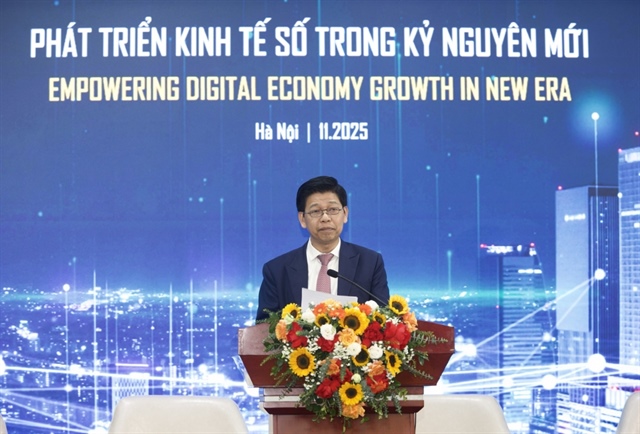Legal factors of M&A game in Vietnam
Legal factors of M&A game in Vietnam
“ We have seen and can expect an increase in foreign investment into equitised SOEs due to the continued initiatives to relax foreign ownership limitations, which has been integrated into the government’s desire to divest its ownership in big players in the consumer goods market. ”
The amount of mergers and acquisitions (M&A) and investment activities in a market indicate many trends, in particular, reflecting confidence in the market. M&A activities in 2018 did not outpace 2017, which had two high-profile public company deals in the beverage sector. Nonetheless, M&A activities in the retail, consumer goods and food and beverage (F&B) sectors remain higher than other sectors. In 2019, we expect continued investment and growth in the retail, consumer goods, and F&B sectors, including the technology and logistics platforms that support such growth. More broadly, this article goes over some of the key factors affecting the M&A market in Vietnam.
In 2017, around 44 per cent of the total value of M&A activities were derived from the consumer goods and retail sector, which indicates that this is an area that remains attractive to investors. In 2018, the overall volume of M&A deals was lower, but the retail and consumer goods sector continues to lead the 2018 M&A market.
Specifically, within the consumer goods industry, convenience stores and mini-marts in Vietnam remain one of the fastest growing segments in the industry and we expect to see continued investment in this segment. News of foreign retailers, such as Lotte Mart and FamilyMart, planning to expand and opening up more stores by 2020 have been common.
It is unclear whether we will see the ‘mega-deals’ of 2017 (in particular Thai Beverage’s investment into Sabeco) replicated in 2019. However, we have seen and can expect an increase in foreign investment into equitised state-owned enterprises (SOEs) due to the continued initiatives to relax foreign ownership limitations, which has been integrated into the government’s desire to divest its ownership in big players in the consumer goods market. SOEs aside, we also expect to see leading local food and beverage companies, like Masan (which had investments from Boon Rawd and SK), continue to attract foreign investors.
Regulatory trends
There are some positive trends from a regulatory perspective which may further build confidence in these sectors. First, the government’s increasing willingness to engage in state divestment (as outlined in Decision No.58/2016/QD-TTg), and as seen in the above examples in the beverage sector. Second, regulations like Decree No.09/2018/ND-CP passed earlier in 2018 ease some of the requirements for foreign-invested traders. Under Decree 09, traders are now allowed to import and wholesale distribute certain products without obtaining a separate business license.
Also, while certain sectors, such as pharmaceuticals distribution, remain restricted for foreign investors, Vietnam is loosening certain restrictions, for example, already-established foreign-invested supermarkets and convenience stores may be granted retail distribution rights for rice, sugar, media recordings and reading materials subject to appraisal. Third, proposed revisions to investment and securities laws suggest that foreign ownership limitations and conditions are set to ease.
On the other hand, uncertainty around the data localisation requirements of the Law on Cybersecurity which came into effect on January 1, 2019 may create some qualms for e-commerce and digital products and service businesses in Vietnam, and in the case of overseas providers, this includes concern about local office requirements. With distribution channels increasingly including online and mobile platforms, and the growth of digital tools (such as marketing and payment) that support the same, clarifications from regulators around such concerns is needed - in particular, when we see vibrancy in the technology sector involving both local and foreign start-ups and investors, which is aligned with Vietnam's Industry 4.0 aspirations.
Also, Decree 09 provides that foreign-invested retail outlets subject to the “economic needs test” (ENT) is only exempted if a proposed retail outlet is less than 500 square metres and located in a trading centre (such as department stores), and is not a mini-supermarket or convenience store, and the Store Establishment License for each of its current retail locations will also be required upon acquisition by a foreign investor into a local company. It remains to be seen as to whether there will be further widening of the ENT exemption in the future.
Competition regulations
When it comes to discussions related to market entry, it is worth mentioning the competitive impacts that any new or emerging player will have on the market, as such contemplated economic concentration (mergers, consolidations, acquisitions or joint ventures) may be subject to mandatory notification filing or may even be prohibited, if certain threshold criteria are met.
From July 2019 onwards, the new Competition Law will prohibit all economic concentrations which have or may have a “significant anti-competitive effect” in the market. This is a move away from the former approach based solely on the combined market shares of the participating enterprises. This shift in focus is in line with anti-trust laws in other major jurisdictions. Regarding the notification threshold for mandatory economic concentration notification, in addition to the parties’ combined market share, the new law will also look to:
leither participating enterprises’ total assets in the Vietnamese market; leither participating enterprises’ revenues in the Vietnamese market; or lthe total value of the transaction.
Foreign investors looking to expand their business in Vietnam will also need to consider whether their market presence will amount to a dominant position within their relevant market. While holding a dominant position is not in itself a violation, Vietnam’s Competition Law does regulate certain activities that will be considered an abuse of dominance if the acting entity is a dominant player. In addition to the 30 per cent market share threshold, the new law introduces the new concept of “significant market power” to determine whether a company is in a market-dominant position.
We expect such regulations to play out in the F&B sector where there are well established players which might be regarded to have significant market power or effect. Moving forward, investors looking to expand their business through M&A activities will need to take into account these changes in competition regulation.
Trade agreements: CPTPP
The Comprehensive and Progressive Agreement for Trans-Pacific Partnership (CPTPP) has just come into effect for Vietnam on January 14, 2019. Vietnam is expected to gain from the CPTPP in various ways, from lowered tariffs to exports to increased confidence in the Vietnamese market. In particular, the consumer goods sector is expected to grow and the F&B sector will also see new opportunities due to Vietnam being a member of the CPTPP.
The CPTPP is expected to reduce tariffs on a number of goods, from textile to agricultural products. Vietnam’s garment industry stands to gain from the CPTPP. The adoption of the CPTPP would result in a reduction of tariffs on consumer goods, such as certain milk and dairy products and textile products, leading to a potential overall increase in the growth of these consumer goods, thereby increasing incentives to invest and driving M&A activities in this area. While tariff reductions will benefit Vietnamese exports, imports from other CPTPP members may also challenge Vietnamese industries. For example, the livestock and agricultural sector may face more competition from CPTPP countries such as New Zealand or Japan.
Finally, with the CPTPP already in effect and the EU-Vietnam Free Trade Agreement (EVFTA) expected to be ratified in the next year, we anticipate increased interest and confidence from investors looking to invest in Vietnam, which will likely help boost investment and M&A deal numbers in the coming years, including the retail and consumer goods sectors.
Conclusion
M&A value in the consumer goods sector and other sectors are expected to rise in 2019. Given that the retail and consumer sector has been a favourite for investment, we expect to see this interest continue to grow, especially from foreign retailers looking to increase investment and further expansion within Vietnam’s markets.
In order to remain an attractive destination for foreign investors, Vietnam must continue to embrace Industry 4.0 and prioritise making digital tools and services available to businesses. Likewise, Vietnam should make it a priority to continue to cut regulatory red tape to lessen unnecessary burdens for investors and entrepreneurs.























